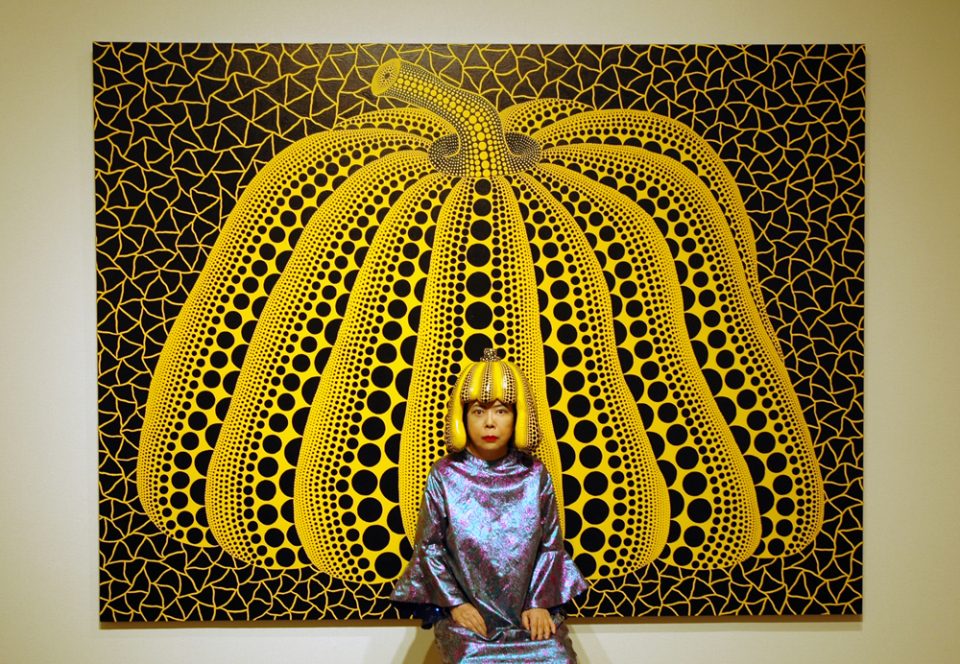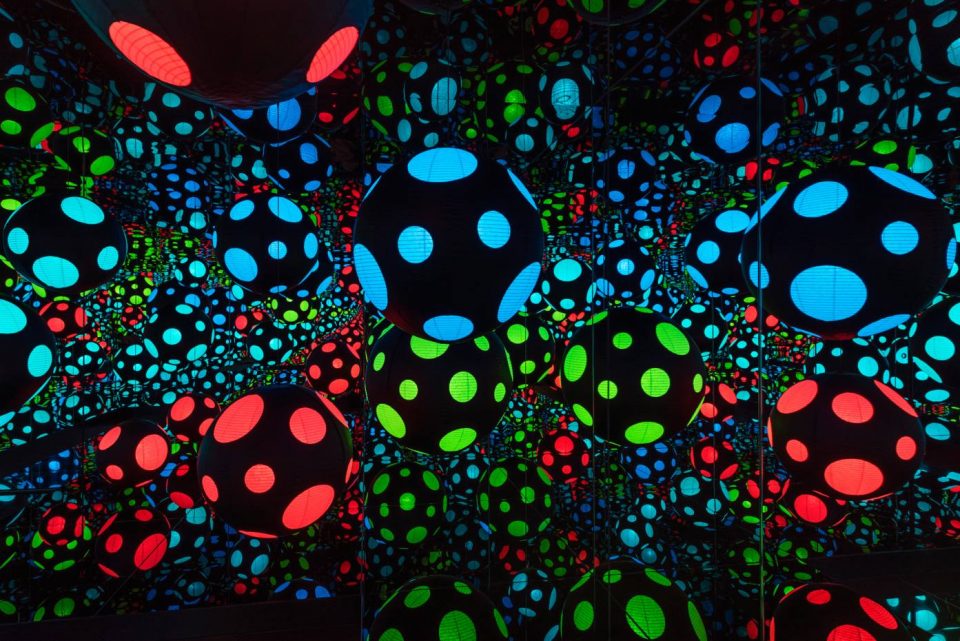“My artwork is an expression of my life, particularly of my mental disease.” (Yayoi Kusama, 1999)
In order to start our weekly theme of #MentalHealthWeekAwareness I decided to talk about one of the most famous female contemporary artists whose art is inspired directly by her obsessive-compulsive behaviour, hallucinations and phobias: Yayoi Kusama (1929- ).

Kusama was born in the city of Matsumoto, in post-war Japan. Her childhood was the opposite of simple, a strict mother and a distant father most certainly had their impact on Kusama’s mental health. She started suffering from hallucinations at the tender age of 10 and that is when she began painting. She decided to study traditional Japanese painting in Kyoto and then moved to New York in the 1950s where she was finally able to express her full artistic potential away from a family that disapproved of her passion for art.
She is mainly associated with artistic styles such as Pop art (of which Andy Warhol is the most well-known artist), Abstract Expressionism (that uses the physical character of paint to evoke personal expressive qualities), Minimalism (that contemplates extreme simplicity of form) and Institutional Critique. As Kusama declared in an interview: “I am an obsessional artist […] people may call me otherwise, but I consider myself a heretic of the art world.” (Grady T. Turner, 1999)
Polka dots. When Kusama was a child, she had hallucinations of herself in a field of flowers that started talking to her. The heads of flowers look like dots and these fields were endless. Within these fields, Kusama remembers that she felt like she was ‘self-obliterating’ (a term that she often uses to describe a feeling of disappearance) into this field of endless dots. She started painting polka dots on any type of medium, from painting to dresses and even pumpkins. In an interview in 2012 when she was asked the reason why she had decided to use pumpkins in her work, she said that “pumpkins are visually humorous.” The addition of dots has for Kusama the purpose of melting the artist and its hallucinations with the environment, letting her become a bigger part of the universe.

Accumulations. “I don’t like sex. I had an obsession with sex. When I was a child, my father had lovers and I experienced seeing him. My mother sent me to spy on him. I didn’t want to have sex with anyone for years […] The sexual obsession and fear of sex sit side by side in me” (Financial Times, 2017). Kusama decided to express her fear and obsession with sex by affixing sewn-and-stuffed phallic protrusions to everyday objects. These arrangements invade a whole room creating an installation. This example of contemporary art tackles gender issues; the Japanese society was very strict and patriarchal therefore Kusama wants to give shape to a woman’s sensation of rage towards male domination through the sexualisation of domestic objects.

Kusama’s mental health struggles did not stop her from following her passion for art, instead, she decided to exploit them in order to fuel her creativity.

Yayoi Kusama, Infinity Mirrored Room “My Heart is Dancing into the Universe”, 2018 
Yayoi Kusama, “Seeking the Soul”, 2012, Silkscreen and etching, 60.5 x 72.5 cm